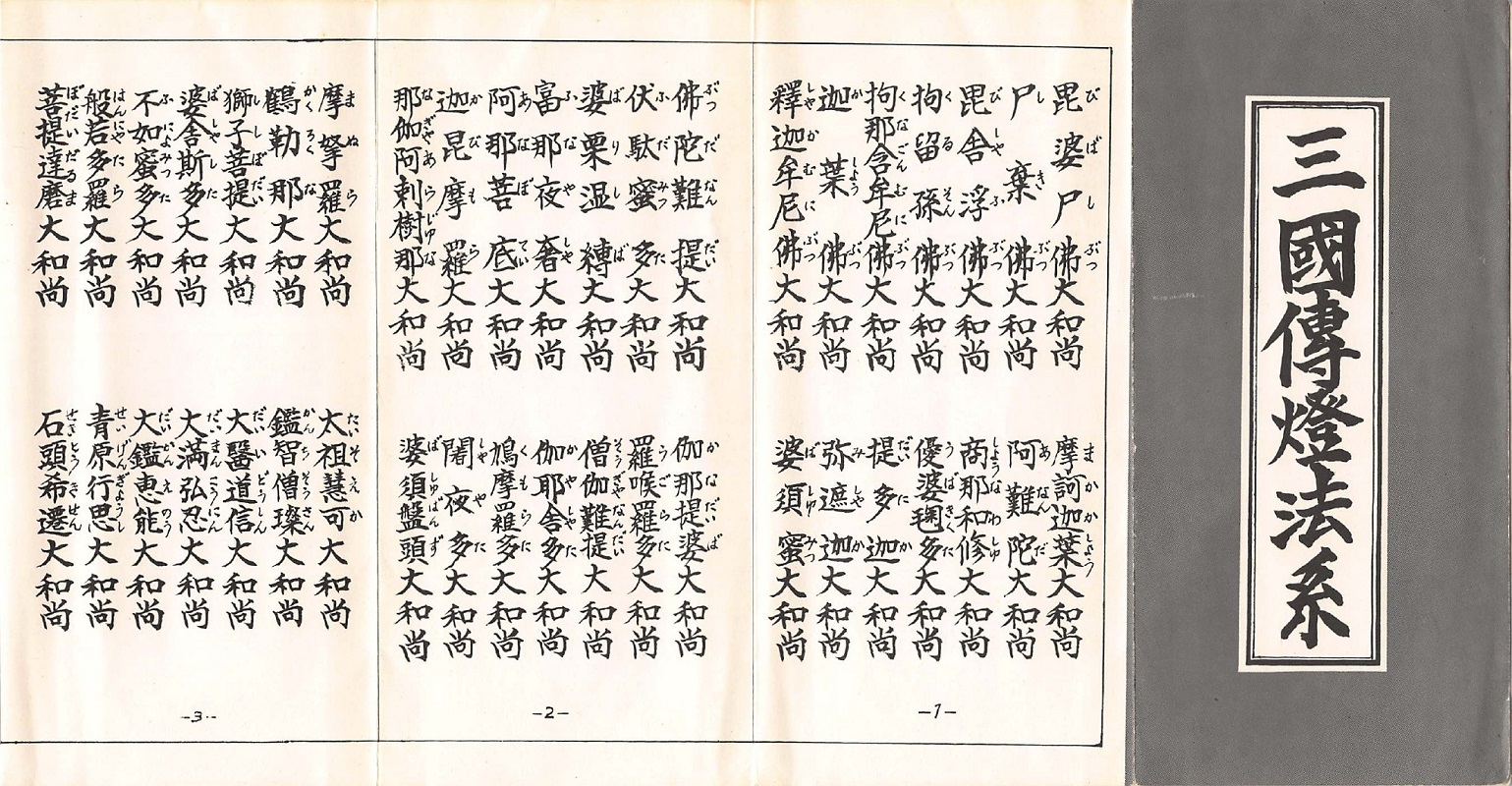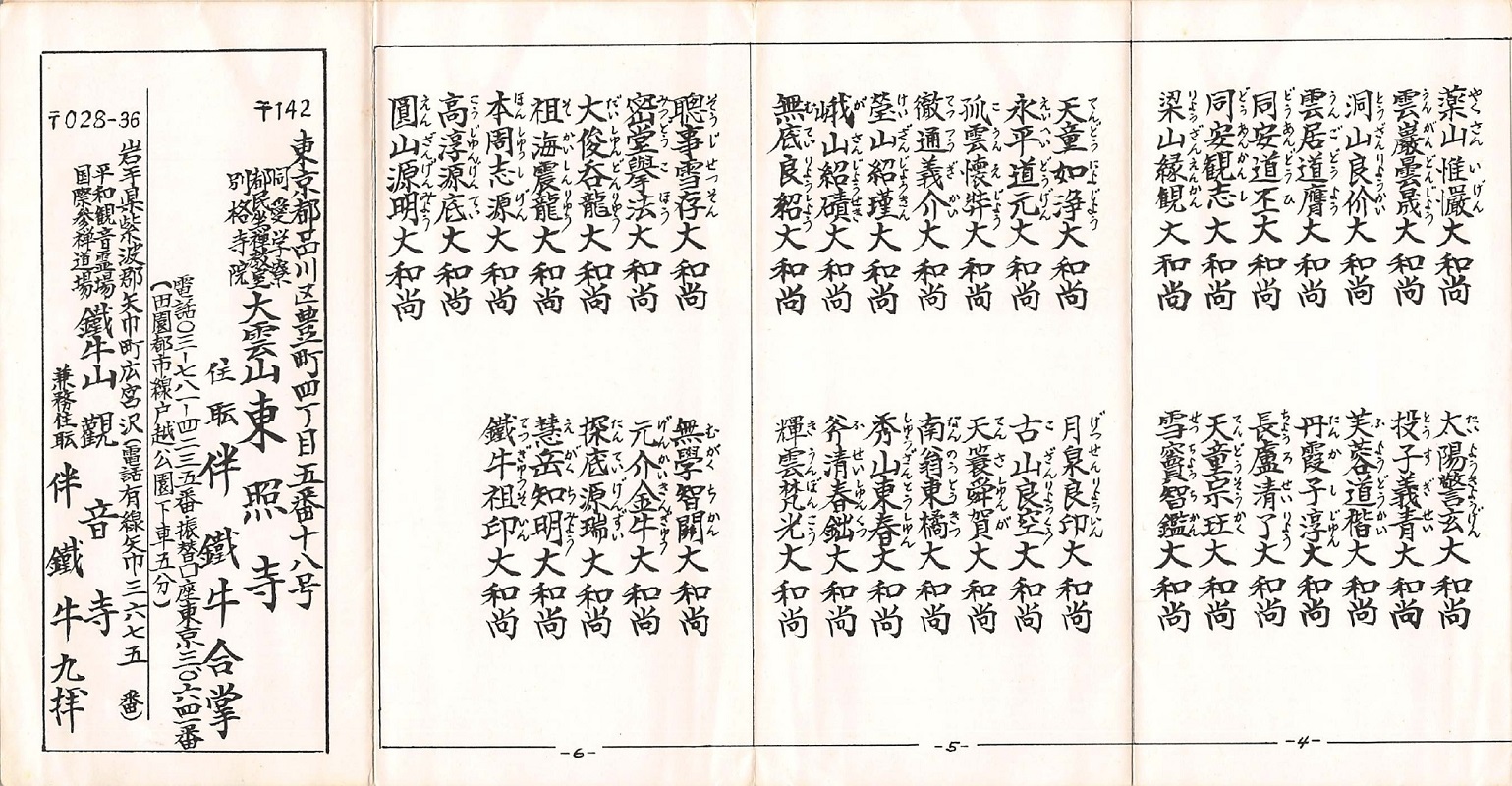ZEN MESTEREK ZEN MASTERS
« Zen főoldal
« vissza a Terebess Online nyitólapjára
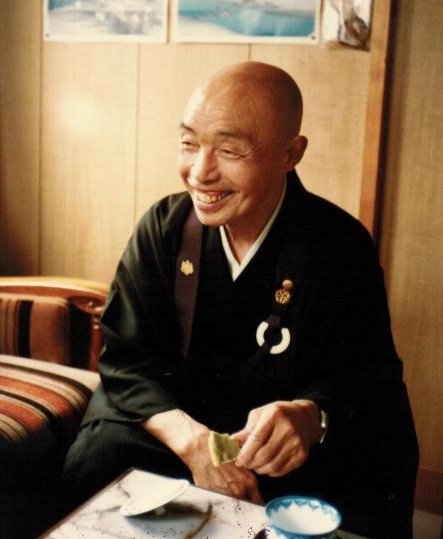
伴 鐵牛 (祖印) Ban Tetsugyū (Soin)
(1910-1996)
![]()
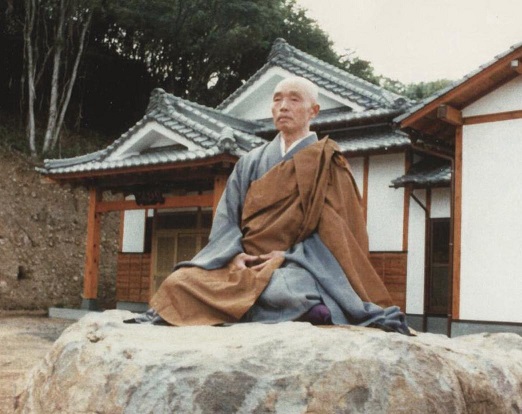
Zazen-ishi 座禅石 Lit. stone for seated meditation.
A large, flat-topped stone which is used for, or thought to be appropriate for meditation.
It is also called jōzaseki 上座石 (sitting a top stone).
1.
Ban Roshi was born in Hanamaki City (Iwate prefecture) June 4, 1910. He was ordained as a Soto Zen monk by 淵沢智明 Fuchizawa Chimyo Roshi July 9, 1917, and received Dharma transmission from him. From 1931 till 1938, he practiced in Hosshinji temple. He became a student of Komazawa University in 1938 and graduated in 1941. After war he became a "tanto" of Hosshinji in 1947, and also a "tanto" of Hoonji (Iwate prefecture) in 1948, and became a master of Toshoji. He received Dharma-success (Inka) from Harada Roshi. He established two temples in Japan, Kannonji (Iwate) and Tetsugyuji (Oita). He retired Toshoji May 10, 1992 and died January 21, 1996. He was 87 years old.
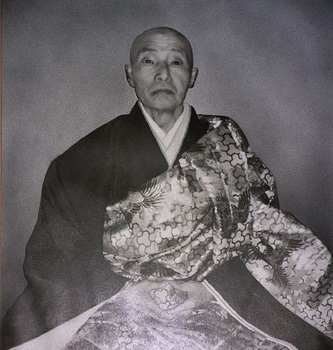
2.
Tetsugyu Ban Bantetsugu (June 4, 1910 - January 21, 1996) was a Zen priest of both Soto Zen and Rinzai Zen, born in Hanamaki, Japan in 1910. Ordained a Soto Zen monk by Fuchizawa Chimyo 淵沢智明 roshi in 1917, he later received Dharma transmission from him. From 1931 till 1938 he practiced in Hosshinji temple, then becoming a student at Komazawa University and graduating in
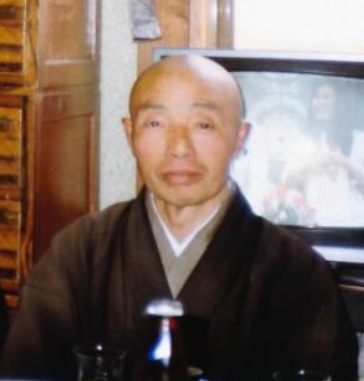
Ban-roshi in April 1982
Maura O'Halloran (1955-1982) and 出口鐵城 Deguchi Tetsujo (1951-) were both Dharma heirs of Ban-roshi. Shengyen Huikong 聖嚴慧空 (1930-2009) [Sheng Yen] also studied with him. Gabor Terebess [釈 元祥 Shaku Genshō] spent some months with him at Tosho-ji in 1967. Paul 鉄心 Tesshin Silverman (1960-) was selected as Ban Tetsugyu Roshi's final Dharma heir in 1989, having started his studies with Ban Roshi in 1978. Ban Roshi began to build his final Zen Temple, Tetsugyuji, in the mid 1980's. Located in rural Oita Prefecture, Tetsugyuji was designed to be a pure “shugyo dojo” (training temple). Ban Roshi sent Paul Tesshin to run the isolated temple in 1989 and named him the official “jushoku” (head abbott) in 1993. Since that time, Paul Tesshin has run hundreds of meditation retreats for participants from around the globe.
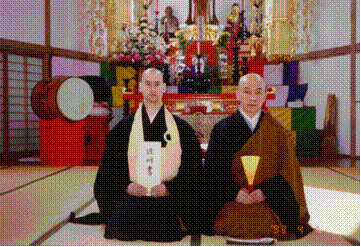
Paul Tesshin Silverman – Head Abbott of Tetsugyuji Zen Temple (Oita Prefecture) with Dharma brother
Tessai Yamamoto – Head Abbott of Kannonji Zen Temple (Iwate Prefecture) and Jofukuji (Nagano Prefecture)
Remembering Tetsugyu Ban Roshi (1910-1996)
https://www.youtube.com/watch?v=ntZmgZgJMDk
2021. jan. 31.
Beacon Zen Temple and Yorktown Zen Temple come together to remember the life of Tetsugyu Ban Roshi on the anniversary of his death. We welcome Zen monk Tesshin Paul Silverman Osho to talk with Tenku Osho about his teacher. Ban Roshi, also known as Go-Roshi, was also Tenku Osho's teacher’s teacher. He was known for being a small but fierce Zen master, full of vigor and great clarity. He founded three temples, in the north, middle and south of Japan, brought the Dharma to women, laypeople and Westerners, and had a large number of disciples, including Maura Soshin O’Halloran and Ven. Sheng Yen. Maezumi Roshi’s father often invited Ban Roshi to lead sesshin at the Kuroda family temple. Tesshin Osho and I are excited to share a bit about Ban Roshi’s life and teachings with you.
鐵牛祖印 Tetsugyū Soin (1910-1996) [伴 Ban]
|
3.
Ban Tetsugyu 伴鉄牛 was born in Hanamaki city (Iwate prefecture) June 4, 1910. He was ordained as a Sōtō Zen monk by Fuchizawa Chimyō
roshi 淵沢智明 July 9, 1917, and received Dharma transmission (inka) from him. From 1931 till 1938, he practiced in Hosshinji temple. He became a student at a Sōtō Zen university, Komazawa University, in 1938 and graduated in 1941. After the war he became a tanto or head monk at Hosshinji in 1947, and also a tanto at Hoonji (Iwate prefecture) in 1948, and became a master of Toshoji. He also received Dharma transmission from Harada Daiun Sogaku Roshi 原田祖岳 (1871-1961). Ban Tetsugyu established two temples in Japan, Kannonji (Iwate) and Tetsugyuji (Oita). On May 10, 1992 he retired from Toshoji and passed away on January 21, 1996. He was 86 years old. Ban Tetsugyu was known to be an extremely strict Zen teacher. For his teachings in Japanese, see Ban Tetsugyu 伴鉄牛, Gendai mumonkan 現代無門関 (A Modern Gateless Gate) (Fukuoka 福岡県: Nakagawa Tetsugen 中川鉄厳, 1980); and Gendai hekigan roku 現代碧厳録 (A Modern Blue Cliff Record) (Fukuoka 福岡県: Nakagawa Tetsugen 中川鉄厳, 1983). There is also a three volume autobiography; see Ban Tetsugyu 伴鉄牛, Gutoku tetsugyu : Ban Tetsugyu jiden 愚禿鉄牛: 伴鉄牛自伝 (Ignorant Bull: The Autobiography of Ban Tetsugyu) (Fukuoka 福岡県: Nakagawa Tetsugen 中川鉄厳, 1976-1981).
Toshoji today:
Toshoji International Zen Center
abbot 鐵城出口 Deguchi Tetsujo
4-5-18 Yutaka-cho Shinagawa-ku
Tokyo 142-0042 Japan
http://www.toshoji.com
http://homepage3.nifty.com/toshoji/tera.htm
http://homepage3.nifty.com/toshoji/histry.htm
![]()
Primo Maestro del Monastero Tosho-ji di Tokyo fondato da Harada Daiun Sogaku, Ban Tetsugyu Roshi nacque ad Hanamaki (prefettura di Iwate) il 4 Giugno del 1910. Venne ordinato Monaco Soto Zen da Fuchizawa Chimyo Roshi nel 1917 e ricevette la trasmissione di Dharma. Dal 1931 al 1938, praticò nel Monastero di Hosshin-ji. Diventò studente dell'Università di Komazawa nel 1938 e si laureò nel 1941. Nel 1947, dopo la guerra, diventò “Tanto” al Monastero Hosshin-ji; nel 1948 Maestro al Monastero di Hoon-ji (prefettura di Iwate) e al Monastero Tosho-ji. Ricevette il Dharma da Harada Daiun Sogaku Roshi.
Fondò due monasteri in Giappone : Kannon-ji (Iwate) e Tetsugyu-ji (Oita). Nel 1992 si ritirò a Kannon-ji nominando suo successore il Maestro Tetsujyo Deguchi che, ancora oggi, ne continua l'impegno.
Morì il 21 Gennaio 1996 all'età di ottantasette anni, dopo una vita dedicata a diffondere uno Zen fresco e pulsante tra gli occidentali che riempivano la sala di meditazione del monastero Tosho-ji.
![]()
鐵牛祖印御老師 (1910/6/4~1996/1/21)
| 1910/6/4 | 岩手県花巻市にて出生 |
| 1917/7/9 | 同県福蔵寺淵沢知明老師について得度・嗣法 |
| 1931/4~1938/3 | 発心寺専門僧堂で修行 |
| 1938/4 | 駒澤大学入学 |
| 1941/3 | 同卒業 |
| その後、大戦によりシベリア行きの捕虜となる。 | |
| 1947 | 発心寺単頭講師 |
| 1950 | 岩手県盛岡報恩寺専門僧堂の監寺及び単頭 |
| その後、東照寺の住職となられ、原田老師から允可を得られる。 | |
| 1972 | 岩手県に観音寺設立 |
| 1980 | 福岡安国寺専門僧堂師家 |
| その間、全国各地に参禅会を開催。主に在家の布教に尽力される。 | |
| 1987 | 大分県に鉄牛寺を建立 |
| 1992/5/10~1996/1/21 | 鉄牛寺の住職を辞し、東照寺を退董され遷化 |
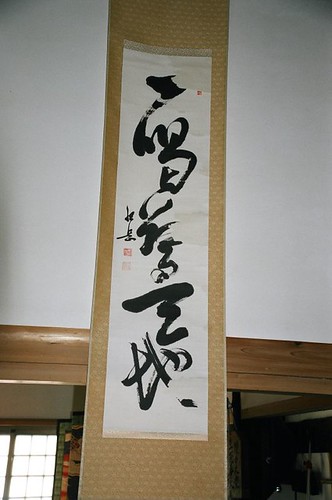
Ban Tetsugyu's Calligraphy
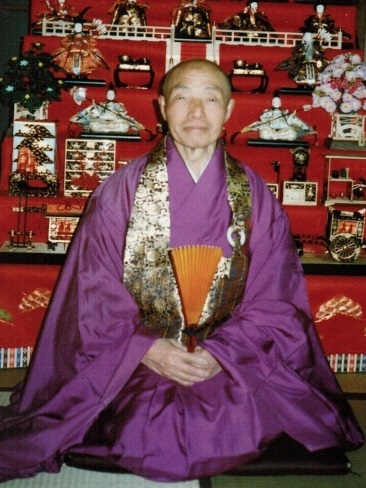
Ban Tetsugyū rōshi's Dharma lineage
(三國傳燈法系 Sangoku dentō hōkei)
永平道元 Eihei Dōgen (1200-1253)
孤雲懐奘 Koun Ejō (1198-1280)
徹通義介 Tettsū Gikai (1219-1309)
螢山紹瑾 Keizan Jōkin (1 268-1325)
峨山韶碩 Gasan Jōseki (1275-1366)
無底良韶 Mutei Ryōshō (1313–1361)
月泉良印 Gessen Ryōin (1319-1400)
古山良空 Kozan Ryōkū (1363-1415)
天簑舜賀 Tensai Shunga
南翁東橘 Nanjō Tōkitsu (?-1505)
秀山東春 Shūzan Tōshun
斧清春鈯 Fusei Shuntotsu
䊤雲梵光 Kyoun Bonkō
聰事雪存 Sōji Setsuson
崈堂擧法 Myōdō Kohō
大俊呑龍 Daishun Donryū
祖海震龍 Sokai Shinryū
本周志源 Honshū Shigen
高淳源底 Kōjun Gentei
圓山源明 Ensan Genmyō
無覺智関 Mugaku Chikan
元介金牛 Genkai Kingyū
挅底源瑞 Tantei Genzui
慧岳知明 Egaku Chimyō [淵沢 老師 Fuchizawa rōshi]
鐵牛祖印 Tetsugyū Soin (1910-1996) [伴 老師 Ban rōshi]
佛祖正傳菩薩大戒血脈
Busso shōden bosatsu daikai kechimyaku
The Bloodline of the Buddha’s and Ancestors’ Transmission of the Great Bodhisattva Precepts

Two dharma transmissions:
Ban rōshi (dharma name: Tetsugyū Soin)
inherited the dharma of both
1) Fuchizawa rōshi (dharma name: Egaku Chimyō) Cf. third section, right side
&
2) Harada rōshi (dharma name: Daiun Sogaku) Cf. third section, left side
三國傳燈法系 Sangoku dentō hōkei
This is a lineage chart showing the succession of Buddhism in three nations (India, China and Japan)
